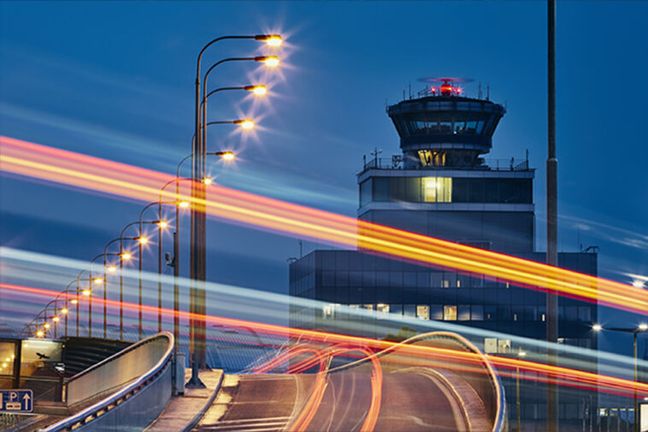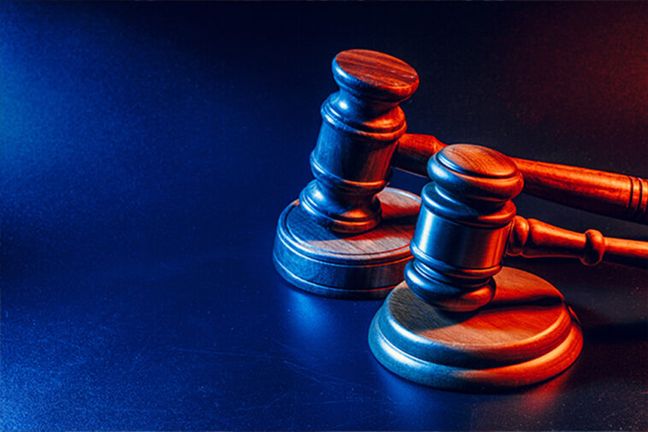When the California Supreme Court issued its opinion in Howell v. Hamilton Meats 52 Cal.4th 541, 257 P.3d 1130, 129 Cal.Rptr.3D 325 (2011), Nevada defense attorneys were hopeful Nevada would follow California’s example and prohibit plaintiff’s lawyers from introducing evidence of medical bills that had been partially or totally forgiven by medical providers. The defense bar was hopeful the case of Tri-County Equip. and Leasing, LLC v. Klinke, 1268 Nev. Adv. Op. 33, 286 P.3d 593 (2012), would be the vehicle by which Nevada would adopt the Howell precedent. This was not to be.
In 2014 in the case of McConnell v. Wal-Mart Stores, Inc., 995 F. Supp. 2d 1164 (D. Nev. 2014), Wal-Mart argued that Tri-Care had actually adopted Howell, but the District Court rejected this optimistic interpretation of the court’s ruling in Tri-County, ruling as follows:
A creditor’s forgiveness of debt—that is what a write-down in the present context amounts to—is often considered equivalent to payment in other contexts. . . In other words, a creditor’s partial forgiveness of a tort victim’s medical bills via a write-down is properly considered a third-party “payment,” evidence of which is barred by the collateral source rule. The Court rejects the Howell Court’s rationale that a write-down is not equivalent to forgiveness of debt because write-downs are prearranged between insurers and providers. See Howell v. Hamilton Meats & Provisions, 52 Cal.4th 541, 129 Cal.Rptr.3d 325, 257 P.3d 1130, 1138–39 (2011).[1]
The one exception to the exclusion of evidence of actual amounts billed versus paid arises in the context of workers’ compensation cases where the employee is able to sue a third party, such as a product manufacturer, for injuries he or she sustained on the job. When that happens, the workers’ compensation carrier has an automatic lien right and the carrier may or may not intervene in the case, depending on whether it believes the plaintiff is doing an adequate job of protecting the carrier’s best interests.
Nevada Revised Statutes (“NRS”) 616C.215(10) states as follows:
“In any trial of an action by the injured employee, or in the case of his or her death by the dependents of the employee, against a person other than the employer or a person in the same employ, the jury must receive proof of the amount of all payments made or to be made by the insurer or the Administrator. . . .”
But what about damages awarded by the jury for pain and suffering, emotional distress and other types of injuries for which no compensation is afforded by workers compensation? In Nevada, when a workers’ compensation carrier is subrogated to the rights of the worker under NRS § 616C.215, the carrier has a lien on the “total proceeds” of any third-party recovery.[2] This is true whether the recovery is by way of judgment, settlement or otherwise.[3] The statute is clear on this point. For years, this meant that the carrier was entitled to subrogation and/or reimbursement from any third-party recovery, regardless of the elements of damages recovered. This is because courts are bound by the statutory language which gives the carrier a subrogation interest in the “total proceeds.”[4] In 1986, the Nevada Supreme Court issued a decision in Breen v. Caesar’s Palace, 715 P.2d 1070 (Nev. 1986), which was likewise very clear on this point. Unfortunately, politics and judicial activism have appeared on the Nevada horizon as of late, putting this announcement in Breen and the dictate of the Nevada legislature into some question.
On April 7, 2017, the Nevada Supreme Court issued an opinion in Poremba v. Southern Nevada Paving, 2017 WL 396094 (Nev. 2017), in which it minimized the value of a workers’ compensation carrier’s future credit after a third-party settlement or recovery. In every other state that provides for a future credit upon settlement of a third-party case, the carrier is relieved from making future medical or indemnity benefit payments until every cent of that recovery has gone to paying medical expenses or indemnity benefits that workers’ compensation would have paid but for the recovery and the resulting credit. As of April 7, 2017, this appears no longer to be the case in Nevada. In Poremba, the Nevada Supreme Court allowed the claimant’s “personal living expenses, such as mortgage payments and food for his family,” to reduce the future credit. The court said that Employers Insurance Co. of Nevada v. Chandler, 117 Nev. 421, 23 P.3d 255 (2001) did not specify how the claimant may exhaust the settlement funds. In essence, this allows the claimant to reduce the future credit by buying things. This is completely the opposite of how the statute anticipates the future credit working. According to the statute, the future obligation of the carrier (to pay medical and indemnity benefits) is reduced by the net amount of the third-party recovery. The statute does not provide that the credit lasts until the employee has blown through his or her money. It means that the credit lasts until amounts spent by the claimant for things that the injured employee or his dependents are entitled to receive pursuant to the Workers’ Compensation Act exceed the amount of the credit. The injured employee is not entitled to “personal living expenses, such as mortgage payments and food for his family,” under the Nevada Workers’ Compensation Act. Therefore, the credit should not be exhausted by such expenses. The credit should be reduced only by any indemnity benefits and medical expenses related to the compensable injury that the employee would have been entitled to receive but for the future credit. Just because the employee’s personal living expenses exceed the amount of any indemnity benefits the employee would be receiving but for the settlement and the credit, it should not fall in the lap of the workers’ compensation carrier. The Supreme Court disagreed.
On January 26, 2017, the Nevada Supreme Court reconsidered en banc its earlier decision in Poremba. It issued a new opinion which superseded its 2016 opinion.[5] Like its earlier decision, the 2017 en banc decision reversed and remanded the case to district court with instructions to hold a new hearing to determine:
“…what, if any, reimbursement an insurer is entitled to before it must provide additional workers’ compensation benefits; and (2) although an insurer may be entitled to reimbursement from the portion of settlement funds designated for expenses otherwise covered by workers’ compensation, an insurer is not entitled to reimbursement from the portion of settlement funds designated to compensate the injured worker for items outside the definition of “compensation” in NRS 616A.090, such as past, present, and future pain and suffering.” 133 Nev. Adv. Op. 2, p. 11
This new pronouncement is a departure from the language of NRS § 616C.215(5), which clearly provides that the carrier “has a lien upon the total proceeds of any recovery from some person other than the employer, whether the proceeds of such recovery are by way of judgment, settlement or otherwise.” Particularly troubling, not to mention confusing, in the en banc opinion is the following statement:
“We agree with the Tobin court and hold that because workers’ compensation insurance never compensates the injured worker for pain and suffering, an insurer is not entitled to reimbursement from any of the settlement funds that were designated for pain and suffering, or any other expense beyond the scope of workers’ compensation defined in NRS 616A.090.” 133 Nev. Adv. Op. 2, p. 10
The Tobin v. Department of Labor & Industries, 187 P.3d 780 (Wash. Ct. App. 2008) decision referred to is a Washington Court of Appeals decision. The court limited a workers’ compensation carrier’s reimbursement and subrogation rights apparently by borrowing the law of another state, instead of following its own 1986 Nevada Supreme Court decision in Breen. The Nevada Supreme Court is bound by the statutory language which gives the insurer a subrogation interest in the total proceeds. There is no room for statutory interpretation; rather, we must be guided by the plain language of the statute. 715 P.2d 1070, 1075 (1986)
The new Poremba decision does not even contain a reference to the court’s ruling on this issue in Breen. It is unclear if courts must apply this new “economic damages” limitation on reimbursement rights only to the calculation of a future credit or to past lien reimbursement rights as well. After confusing everybody with this statement, the court then moved on to the main holding in the case. Because Chandler did not limit how the employee may exhaust settlement funds in order to reduce the carrier’s future credit, the court ruled that the future credit can be exhausted on family expenses, buying food, etc.
The Nevada Supreme Court in Poremba was not done inflicting damage on carriers’ rights of subrogation in Nevada, however. It went on to hold that, because the record was silent as to how Poremba’s settlement was to be allocated beyond the amount spent directly on medical expenses, the court ordered the appeals officer to conduct an evidentiary hearing. The court held that in such hearing, the parties may present evidence and call witnesses with regard to the settlement proceedings so that the appeals officer could make a factual determination as to how the remainder of the settlement was to be allocated. The court further held that the appeals officer may only order reimbursement from the portion of the settlement allocated for expenses within the scope of workers’ compensation. It announced that, from this point forward, parties can expressly designate how settlement funds are to be allocated so that future evidentiary hearings are not necessary. This is a direct and undisguised green light to plaintiffs’ attorneys to fashion settlements by unilaterally disguising large portions of a settlement as non-economic damages which the Supreme Court now appears to be claiming are not subject to the carrier’s right of subrogation and/or reimbursement.
This new decision underscores the absolute necessity of having active subrogation counsel involved in every step of a Nevada workers’ compensation subrogation claim.
[1] 995 F.Supp.2d at 1170.
[2] NRS § 616C.215(5).
[3] Id.
[4] Breen v. Caesar’s Palace, 715 P.2d 1070 (Nev. 1986).
[5] Poremba v. S. Nev. Paving, 369 P.3d 357 (Nev. 2016), reh’g denied (May 26, 2016), opinion superseded on reconsideration by Poremba v. Southern Nevada Paving, 2017 WL 396094 (Nev. 2017).

 Cannabis Workers Allege Quota to Trim 4 Pounds a Day Violates the California Labor Code
Cannabis Workers Allege Quota to Trim 4 Pounds a Day Violates the California Labor Code
 The Ninth Circuit Reminds Us: Every Word Matters
The Ninth Circuit Reminds Us: Every Word Matters
 NO WAY, PRO SE! The Consequences of Abusing the Judicial System as a Pro Se Litigant in Colorado
NO WAY, PRO SE! The Consequences of Abusing the Judicial System as a Pro Se Litigant in Colorado
 Victim of Financial Mismanagement or Unlawful Retaliation? New Jersey City University Program Founder Claims School Retaliated After Reporting Alleged Sexual Harassment
Victim of Financial Mismanagement or Unlawful Retaliation? New Jersey City University Program Founder Claims School Retaliated After Reporting Alleged Sexual Harassment
 “Real Housewives” Gets a Reality Check
“Real Housewives” Gets a Reality Check
 Missing a Chapter: Insufficiency of Expert Deposition Testimony in Medical Malpractice Litigation
Missing a Chapter: Insufficiency of Expert Deposition Testimony in Medical Malpractice Litigation
 Crash Course: Why Summary Judgment Misses the Mark in Illinois Multi-Cause Limousine Crash Collision
Crash Course: Why Summary Judgment Misses the Mark in Illinois Multi-Cause Limousine Crash Collision
 Bitter Truths: Lead, Cadmium, and Defective Pleadings in California Chocolate Class Action
Bitter Truths: Lead, Cadmium, and Defective Pleadings in California Chocolate Class Action
 The Law of Unintended Consequences: Including Insurance Brokers in Litigation Strategy Communication May Waive the Attorney-Client Privilege
The Law of Unintended Consequences: Including Insurance Brokers in Litigation Strategy Communication May Waive the Attorney-Client Privilege